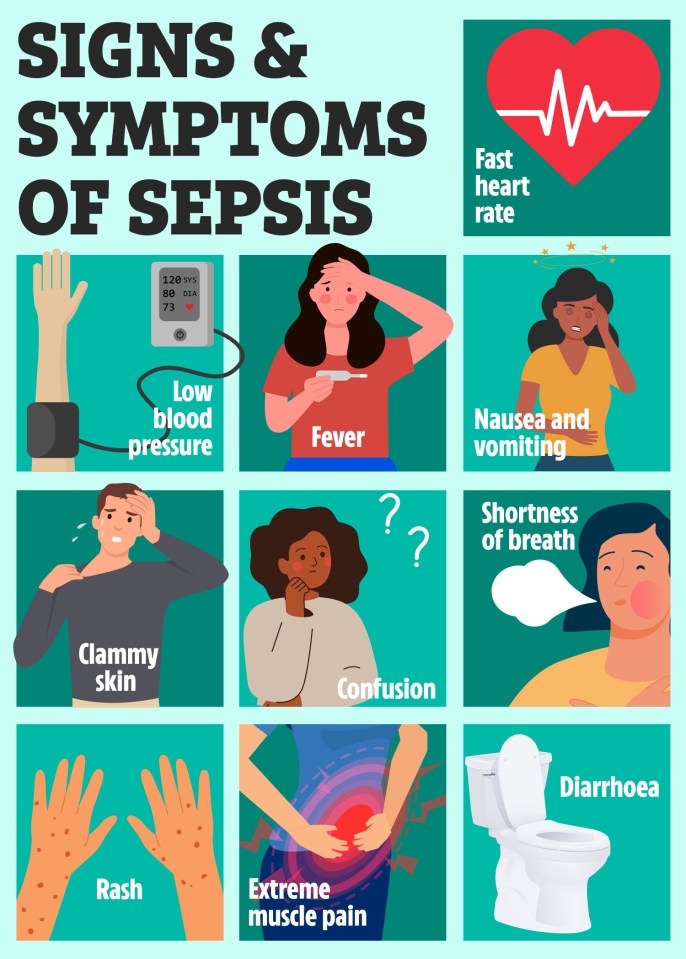HALF of surviving sepsis patients die within two years, a new study shows.
Sepsis is a serious illness with a high mortality rate, but the latest research highlights its long-lasting threat to a person’s lifespan.
Danish researchers examined deaths over a long follow-up period in a prospective study of 714 adult Dane patients admitted to the emergency department with sepsis.
Dr Finn E Nielsen, a senior scientist in the Department of Clinical Epidemiology at Aarhus University Hospital, Denmark, said: “We found that certain factors increased the risk of death after sepsis, including, not surprisingly, advanced age.
“Additionally, conditions such as dementia, heart disease, cancer and previous hospitalisation with sepsis within the last six months before admission also elevated the risk of dying during a median follow-up period of two years.”
The findings, being presented at the European Emergency Medicine Congress today (Tuesday), showed that the risk of death increased by four per cent for every additional year of age.
A history of cancer more than doubles the risk (121 per cent).
Heart disease increased the risk by 39 per cent, dementia by 90 per cent, and previous admission with sepsis within the last six months by 48 per cent.
Dr Nielsen said patients with the risk factors should be identified and followed up more closely after they are discharged.
The World Health Organization warned in 2020 that little is known on the outcomes of people who survive sepsis.
Dr Barbra Backus, an emergency physician in Rotterdam, The Netherlands, who was not involved with the research, said: “Sepsis is a serious and potentially fatal medical condition.
“The incidence of sepsis is increasing in several countries, yet so far, there has been limited, reliable information about long-term outcomes for patients who develop sepsis.
“More research is needed to help us better understand the risk factors for an increased risk of dying from sepsis, which can help to improve treatment.”
Sepsis has a mortality rate of around 20 per cent, the Sepsis Trust reports.
There are around 48,000 deaths from sepsis in the UK every year – more than breast, bowel and prostate cancer combined.
Each year, almost 80,000 people end up with life-changing after-effects, ranging from lethargy and muscle weakness to PTSD and repeated infections.
Who gets sepsis and what causes it?
Sepsis can affect anyone. The condition occurs when the body’s immune system has an overeaction to an infection.
As a result, the body attacks itself.
Some people are more likely to get an infection that could lead to sepsis, however.
This includes babies under the age of one, people over 75 years old, people with diabetes or a weak immune system (either due to treatment, a condition or genetically), people who have recently had surgery or given birth.
Any infection can lead to sepsis. But those more likely to are those of:
- Lungs, such as pneumonia.
- Kidney, bladder and other parts of the urinary system
- Digestive system
- Bloodstream
- Catheter sites
- Wounds or burns


